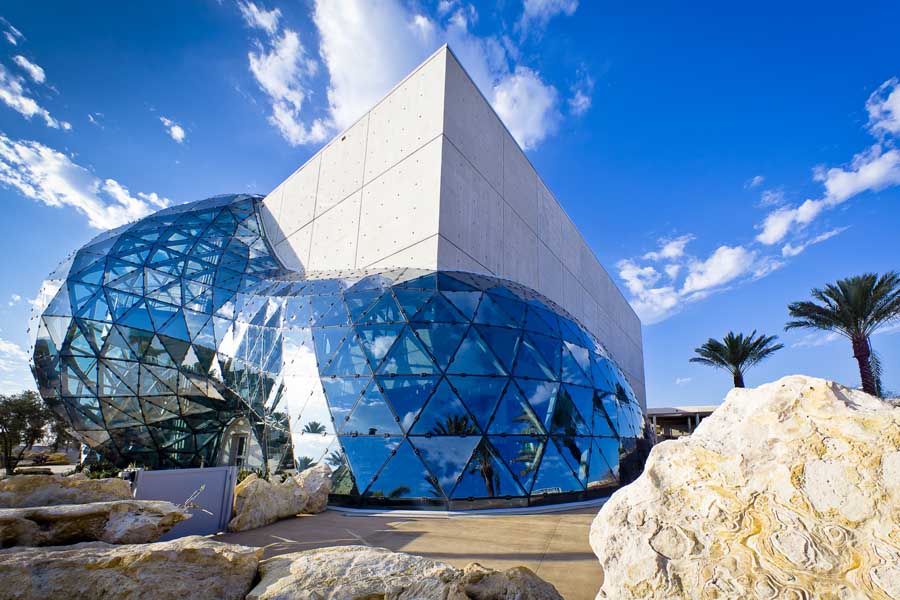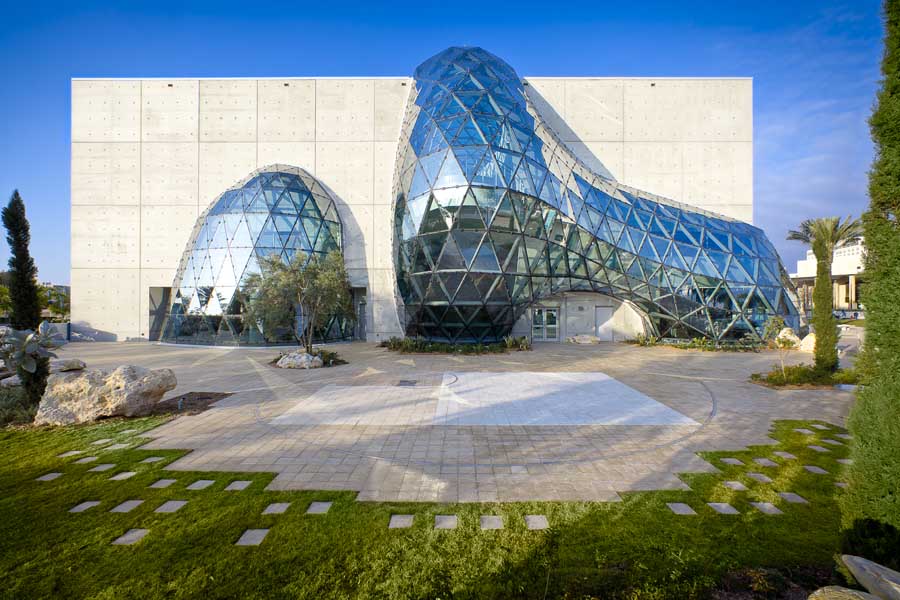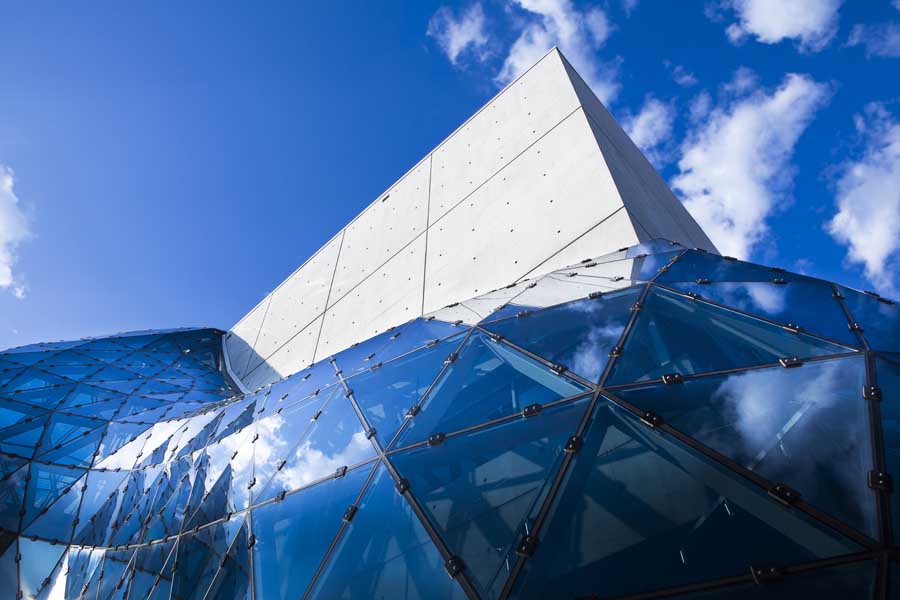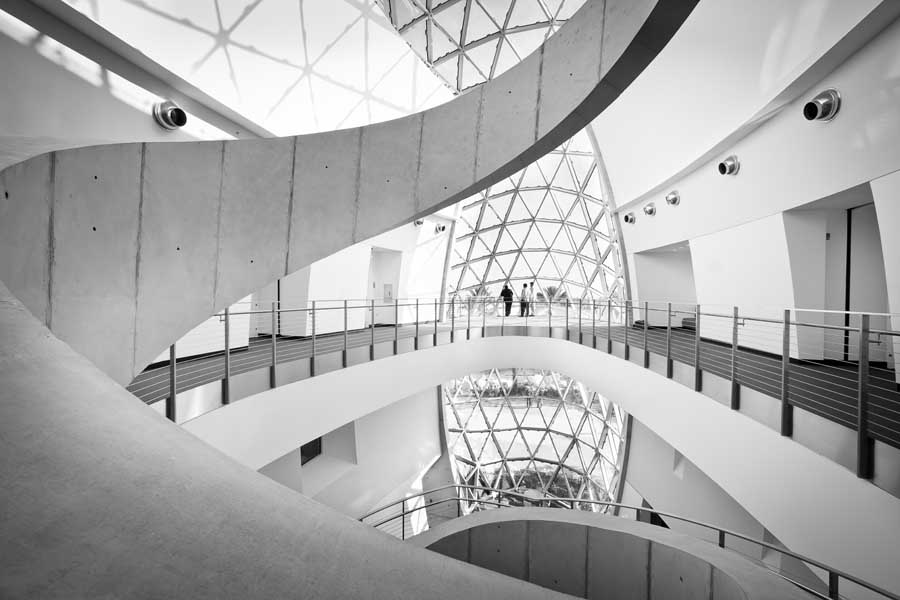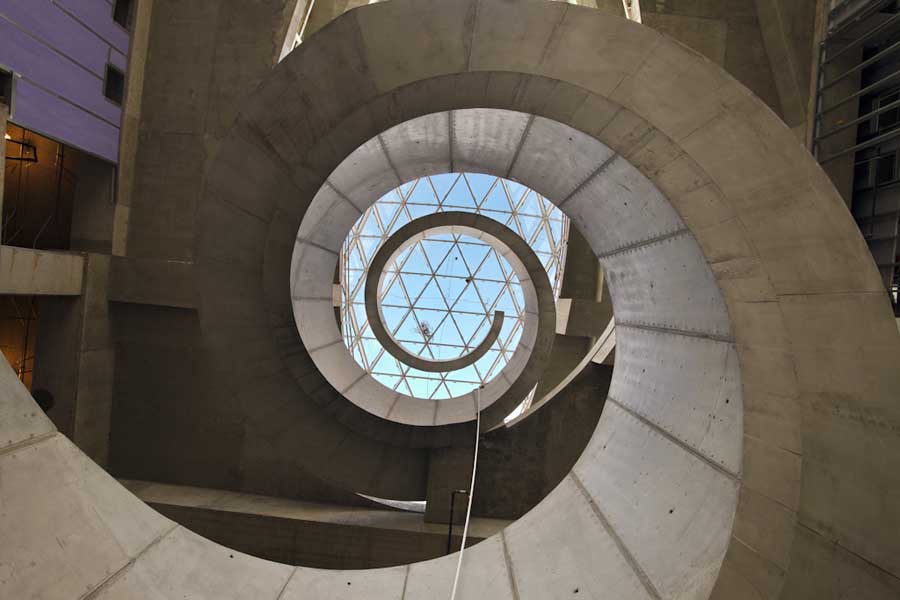The new Dali Museum situated on a popular waterfront site in St. Petersburg, Florida, was opened to the public in January, 2011. Designed by HOK Designs, lead by architect Yann Weymouth it was built at a cost of $29.8m and comprises 66.000sqf.over 3 levels.
The façade of the concrete structure exhibits a protruding glass shape reminiscent of the surrealistic forms seen in the work of the artist, and is constructed of triangular glass panels, each of which vary in size. The interior levels are accessed by a spiral staircase, an allusion to Dali’s fascination with DNA. Twice the size of the original museum, the new building contains the world’s most comprehensive permanent collection of works by the artist.
The location demanded that the stability of the structure be of paramount importance, able to withstand the local weather conditions. The 12inch thick roof and 18inch thick walls ensure that the building is hurricane proof. Further safety measures are internal storm walls which isolate and shield the vault and galleries when required.
Efficient insulation and flexible solar panels as well as water recycling systems add to the sustainability of the museum and contribute to its ability to function in an environmentally sound and economical way.
